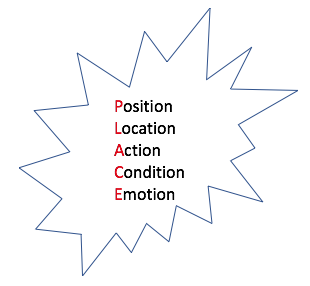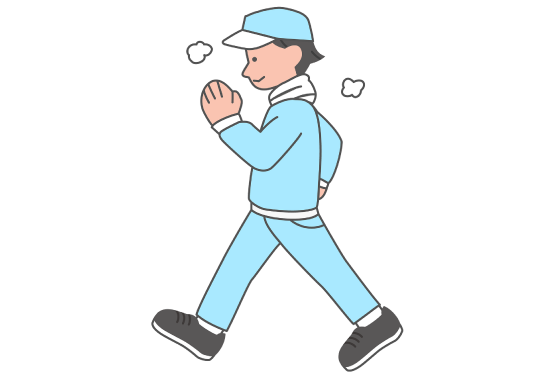2.5: "Estar" con preposiciones y adjetivos
- Page ID
- 75227
\( \newcommand{\vecs}[1]{\overset { \scriptstyle \rightharpoonup} {\mathbf{#1}} } \) \( \newcommand{\vecd}[1]{\overset{-\!-\!\rightharpoonup}{\vphantom{a}\smash {#1}}} \)\(\newcommand{\id}{\mathrm{id}}\) \( \newcommand{\Span}{\mathrm{span}}\) \( \newcommand{\kernel}{\mathrm{null}\,}\) \( \newcommand{\range}{\mathrm{range}\,}\) \( \newcommand{\RealPart}{\mathrm{Re}}\) \( \newcommand{\ImaginaryPart}{\mathrm{Im}}\) \( \newcommand{\Argument}{\mathrm{Arg}}\) \( \newcommand{\norm}[1]{\| #1 \|}\) \( \newcommand{\inner}[2]{\langle #1, #2 \rangle}\) \( \newcommand{\Span}{\mathrm{span}}\) \(\newcommand{\id}{\mathrm{id}}\) \( \newcommand{\Span}{\mathrm{span}}\) \( \newcommand{\kernel}{\mathrm{null}\,}\) \( \newcommand{\range}{\mathrm{range}\,}\) \( \newcommand{\RealPart}{\mathrm{Re}}\) \( \newcommand{\ImaginaryPart}{\mathrm{Im}}\) \( \newcommand{\Argument}{\mathrm{Arg}}\) \( \newcommand{\norm}[1]{\| #1 \|}\) \( \newcommand{\inner}[2]{\langle #1, #2 \rangle}\) \( \newcommand{\Span}{\mathrm{span}}\)\(\newcommand{\AA}{\unicode[.8,0]{x212B}}\)
"Estar" with prepositions and adjectives
In 1.4.0 you learned how to conjugate the verb "ser" (to be). Unlike English, Spanish has a second verb that translates as "to be": "estar".
Conjugation
While it looks like a regular "-ar" verb, "estar" is an irregular verb because the "yo" form is irregular; and the endings of "tú, usted, él, ella, ustedes, ellos, ellas" require a written accent.
| Singular | Conjugation | Plural | Conjugation |
|---|---|---|---|
| yo | estoy | nosotros/nosotras | estamos |
| tú | estás | vosotros/vosotras | estáis |
| usted, él/ella | está | ustedes, ellos/ellas | están |
Uses of "estar"
The acronym used to help you remember the uses of "estar" is PLACE:

In the following list, the words that refer to the acronym PLACE are indicated in bold.
- Position: "El libro está encima de la mesa." "El lápiz está en la mochila." ("The book is on top of the table." "The pencil is in the backpack.")
- Location: "Ramiro está en la oficina." "Inés está en casa." ("Ramiro is at the office." "Inés is at home.")
- Action: "Ellos están hablando". "Beto está caminando." ("They are talking." "Beto is walking.")
- Condition: "Estoy enfermo." "Laura está preocupada." ("I am sick (ill)." "Laura is worried.")
- Emotion: "Tú estás feliz." "Vosotros estáis tristes." ("You are happy." "You are sad.")
Common prepositions and adverbs used with location are:
| al lado de | next to | delante de | in front of (not facing) |
| a la derecha de | to the right of | detrás de | behind |
| a la izquierda de | to the left of | en | in; on; at |
| allá | over there | encima de | on top of |
| allí | there | en frente de | in front of (facing) |
| aquí | here | entre | between |
| cerca de | near | lejos de | far from |
| con | with | sin | without |
| debajo de | below | sobre | on; over |
Common adjectives of condition and emotion are:
| abierto/a | open | contento/a | content | listo/a | ready |
| aburrido/a | bored | desordenado/a | messy; disorderly | nervioso/a | nervous |
| alegre | happy | enamorado/a (de) | in love (with) | ocupado/a | busy |
| avergonzado/a | embarrassed | enojado/a | angry | ordenado/a | tidy; orderly |
| cansado/a | tired | enfermo/a | sick (ill) | preocupado/a (por) | worried (about) |
| cerrado/a | closed | equivocado/a | wrong | seguro/a | sure |
| cómodo/a | comfortable | feliz | happy | sucio/a | dirty |
| confundido/a | confused | limpio/a | clean | triste | sad |





